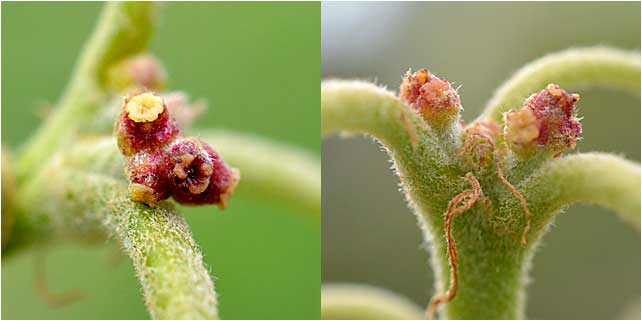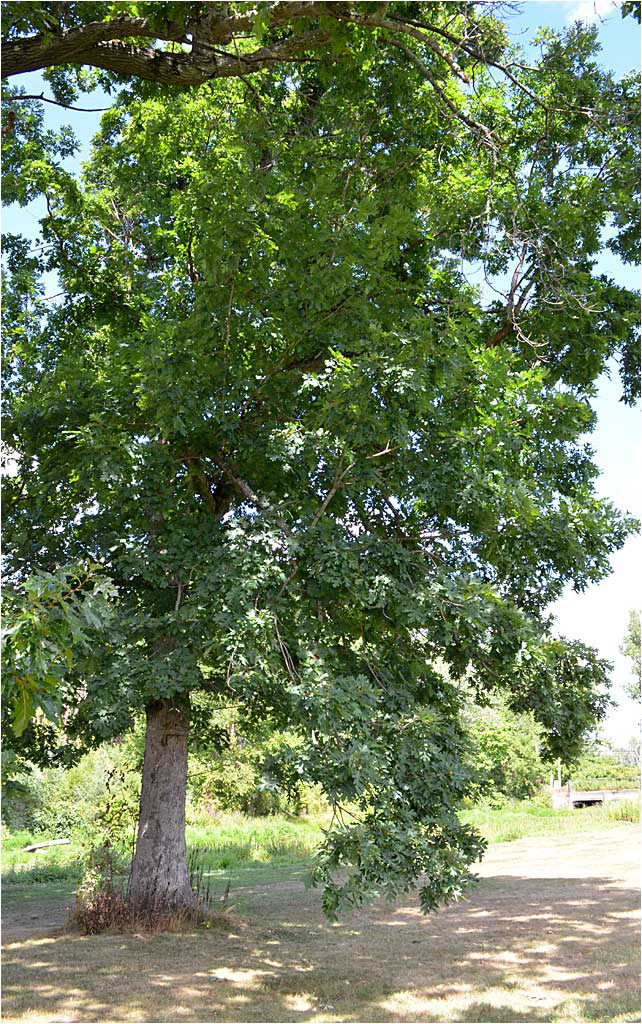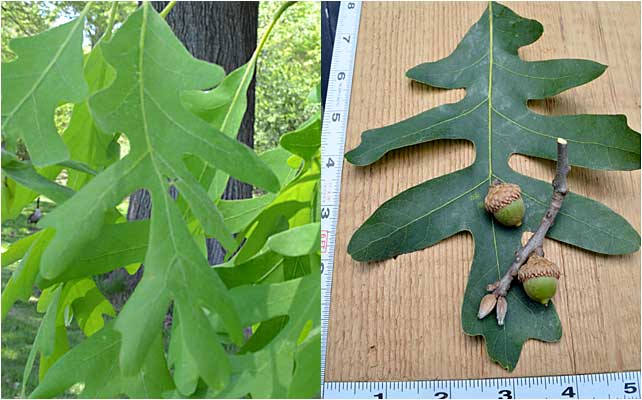56. WHITE OAK, Quercus alba

White Oak is a keystone native tree that makes invaluable contributions to our environment. Everything from soil and root enrichment to supporting a complete, complex food web. The species is long-lived, and while some maintain that Oaks may live 900 years (and a few do) - in our environment we are lucky if they reach 250 - 300 years. Soil compaction, habitat destruction, and other urban tree stressors take their toll.
SPRING, MALE CATKINS

Early in Spring the male catkins of White Oak cover the trees. Each long catkin contains hundreds of individual male flowers which produce pollen every year. Notice the light color of the emerging leaves as well.
TINY FEMALE FLOWERS

You will find the tiny female flowers located in the areas where the leafstalk and stem form a juncture (called an axil). This is exactly where the acorns will appear after the flowers are fertilized.
HITCHHIKERS

Galls are commonly found on White Oaks and are nurseries for Cynipid wasps and other types of insects. An adult wasp will inject a larva and some chemical coding into the tree that makes the tree grow the protection for the larval wasp. In most cases, galls live side-by-side with oaks and don't cause any permanent damage.
SUMMER

This White Oak has lived in the shadow of a very large Red Oak for all of its 100 plus year life. That Red Oak was recently toppled by a rain inundation in 2023. The Arboretum will study the White Oak over time to see its response to increased sunlight and water resources.
WHITE OAK LEAF

The White Oak is not only a species but also a "family" of many species of Oak trees. The two main families of Oak are Red Oak and White Oak. White Oak trees are distinguished by smooth lobes on their leaves, while Red Oak trees have pointed lobes. Popular species in the White Oak family include White Oak and Swamp White Oak, plus Burr, Post, and Chinkapin Oak.
ACORN DEVELOPMENT

Over the Summer and into the Fall, the valuable (to wildlife) acorns of White Oak grow and mature. They start as fertilized flowers (top left), then grow their caps, and the seed later. Ultimately they reach the size shown above. Oaks vary the amount of acorns they produce each year to limit the number of consumers. White Oak acorns are low in tannin and favored by deer, squirrels, and blue jays (to name a few) as soon as they drop.
FALL

Some years the color of White Oak foliage is muted (brown), in others quite dramatic (reddish).